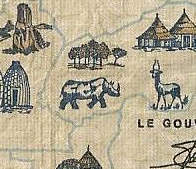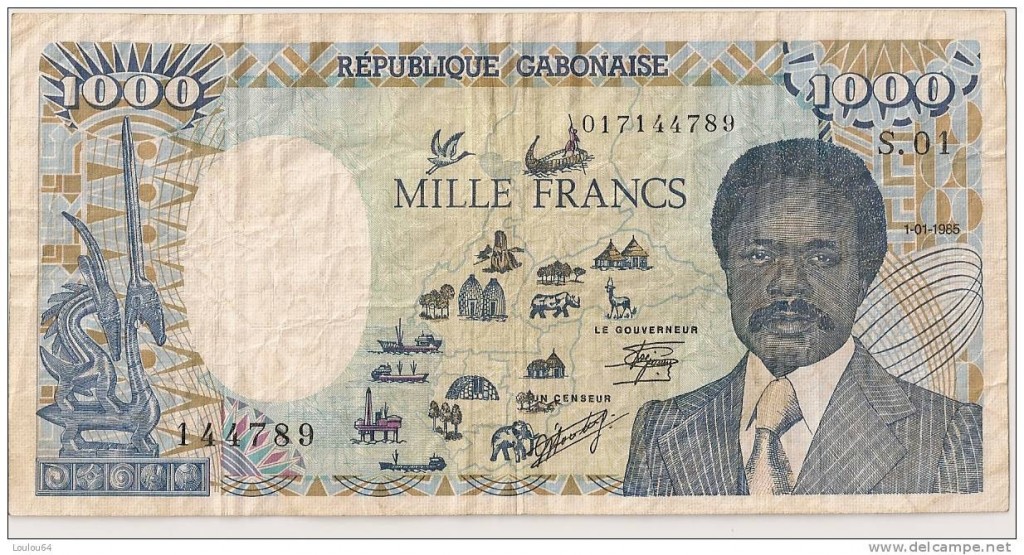Gabon’s Rhinos
Posted by: Loren Coleman on November 3rd, 2012
Do black rhinoceros exist in Gabon, Africa?

Intriguingly, since, at least the 1930s there have been sightings of “forest rhinos” in the Western African nation of Gabon. While wildlife biologists today, generally, view such accounts skeptically, it was a famed wildlife biologist, Lucien Blancou who first gave credence to the reports from his correspondent G. Trail. Trail told Blancou in a letter that he had encountered a Gabon rhinoceros during the dry season in 1931 or 1932. Blancou wrote about the sighting in the journal Mammalia in the 1950s.
While Ivan T. Sanderson had talked of cryptozoology earlier in the 1940s, it was Bernard Heuvelmans who used the word often in his French correspondence. In the course of letter-writing, Heuvelmans employed the word “cryptozoology” (it does not appear in On the Track of Unknown Animals). That word saw print for the first time in 1959 when French wildlife official Lucien Blancou dedicated a book to the “master of cryptozoology.” Heuvelmans corresponded with many cryptozoologists worldwide, as he did with me, over the decades. By the 1960s, most in the field had elevated Blancou’s phrase in honor of Heuvelmans, and Heuvelmans was being called the “Father of Cryptozoology.” For decades, Sanderson’s role in coining the word was lost.
What at first seems like a Gabon rhinoceros appears in 1985, graphically, on the 1000 Francs note of the currency of de la République Gabonaise. Michel Raynal sends along a clarification: “In fact, the map is not from Gabon, but from Western Africa, and the rhino is located in Central African Republic.”

At the Symposium on Cryptozoology in Dinant, Belgium in 2010, it is to be noted that French cryptozoologist Michel Raynal gave a presentation on the cryptid reports of the elusive “forest rhinoceros” of Africa, particularly of the accounts of the ones seen in Gabon.
Sources:
Blancou, L. 1954 Notes sur les mammiferes de l’Equateur Africain Francais – un rhinoceros de foret?. Mammalia 18: 358-363
Blancou, L. 1958 Distribution geographique des ongules d’Afrique Equatoriale Francaise en relation avec leur ecologie. Mammalia 22: 294-316
Blancou, L. 1963 Un rhinoceros africain forestier?. Vie des Betes no. 62: 24-27
Coleman, L. Bernard Heuvelmans obituary.
Raynal, Michel. Correspondence, November 3, 2012.
Rhinoceros Resource Center, 2012.
Trial, G. 1955 Dix ans de chasse au Gabon. Paris, Crépin-Leblond & Cie
About Loren Coleman
Loren Coleman is one of the world’s leading cryptozoologists, some say “the” leading living cryptozoologist. Certainly, he is acknowledged as the current living American researcher and writer who has most popularized cryptozoology in the late 20th and early 21st centuries.
Starting his fieldwork and investigations in 1960, after traveling and trekking extensively in pursuit of cryptozoological mysteries, Coleman began writing to share his experiences in 1969. An honorary member of Ivan T. Sanderson’s Society for the Investigation of the Unexplained in the 1970s, Coleman has been bestowed with similar honorary memberships of the North Idaho College Cryptozoology Club in 1983, and in subsequent years, that of the British Columbia Scientific Cryptozoology Club, CryptoSafari International, and other international organizations. He was also a Life Member and Benefactor of the International Society of Cryptozoology (now-defunct).
Loren Coleman’s daily blog, as a member of the Cryptomundo Team, served as an ongoing avenue of communication for the ever-growing body of cryptozoo news from 2005 through 2013. He returned as an infrequent contributor beginning Halloween week of 2015.
Coleman is the founder in 2003, and current director of the International Cryptozoology Museum in Portland, Maine.










I am often puzzled by the static conceptions that biologists have for the locations of various species. A rhino has a range of hundreds and hundreds of miles at least. So a few take a left turn instead of a right? They end up in Gabon. Is that really that hard to imagine?
The same thing happens in this country with the cougar. The animal has an enormous range, the northeast has reforested itself at rate far greater than most environmentalist had thought, and yet the possibility that one or two cougars have wandered in from Canada or the midwest, only four or five hundred miles away, is scoffed by wildlife experts. That’s not science; it’s blind orthodoxy.
I agree.Black rhinos are native to Cameroon and Angola.A few could have easily strayed into Gabon by mistake.Based on research,the most likely suspect would be the South Western Black Rhinoceros.Also,if you check Wikipedia for Black Rhinoceros,there is a small picture of Africa with colours indicating where Black Rhinos live.Near the area of Gabon,there is a black blotch,symbolising that Black Rhinos are extinct in the area.
I agree, too.
This is the same point I have been making here about the appearance of cougars in the Central and Eastern US.
Animals not only roam, they re-establish territory, and sometimes survive out of sight only to re-appear.
Although we are several hundred miles from traditional moose country, a pair of moose have established themselves at the west end of our lake. This isn’t the case of a brain-damaged individual, it is a pair who may produce a calf next spring.
We already have elk, mule deer, whitetail deer, and cougars. But moose, that’s something new!